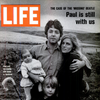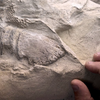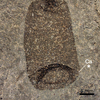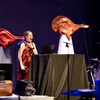Methods of Scientific Dating

An image of the Grand Canyon, with layers of the Earth exposed. (Source: National Park Service)
Our past is unwieldy, a maze that stretches across billions of years, but a maze that must be solved. This most basic step in scientific pursuit is naturally the most fundamental; nothing can be known of an object or event if we don’t know when it happened. Luckily scientists have a long list of tools at hand to reconstruct the labyrinthine past.
Scientific dating falls into one of two main categories: absolute dating and relative dating. As their names suggest, absolute dating seeks to find a definitive numerical age of a given specimen (or as close as possible), while relative dating arranges past events in rough sequence with each other. While absolute dating is definitionally more precise, relative dating is still a valuable tool, with scientists using both methods to assemble a timeline of the ancient past.

Willard Libby, who won the Nobel Prize in Chemistry for discovering radiocarbon dating. (Source: UCLA)
In the realm of absolute dating, radiocarbon dating makes use of unstable carbon isotopes to pinpoint the age of an organic specimen. Carbon-14 is formed through the interaction of cosmic rays with nitrogen in the upper atmosphere. From there, Carbon-14 enters the carbon cycle, where it embeds itself in plant life and animals.
Because Carbon-14 is unstable, it begins to break down after the organism dies. By measuring the amount of Carbon-14 and comparing it to the rate at which it decays, scientists are able to pin down the age of a given specimen, provided the specimen is younger than 50,000 years. A lower carbon amount means an older specimen, as it has more time to decay. Other elements such as potassium can also be used to date items in different chronological groups.
Another absolute dating method is archaeomagnetic dating, which makes use of the Earth’s magnetic field and its effect on a given object. As an object (say a piece of pottery) is heated to a certain point, it passes over the Curie point where it loses its magnetic properties. As it cools again it regains this property, preserving within it a snapshot of the Earth’s magnetic field at that time. Based on the estimated flow of the field, one can match the object to when the field’s direction last corresponded to the object’s snapshot, allowing an estimate of its age.

A trilobite, often used as an index fossil. (Source: Smithsonian Institution)
Relative dating can’t hope to be as precise as carbon dating or archaeomagnetism, but it’s still a useful tool, especially in the dating of the Earth’s strata. One means of accomplishing this is by using index fossils. These fossils allow paleontologists to estimate the age of surrounding specimens. They require a specimen that has a wide range geographically but a fixed range temporally, allowing some certainty in estimating the age of the area wherever the index fossils are found.
Index fossils are useful for understanding the ancient past, but it’s obviously unsuited for objects from human history. Seriation on the other hand applies a similar principle but with man-made objects. On a basic level, seriation is simply the ordering of data into a chronological order. In an archaeological context, seriation relies on identifying stylistic attributes of a given culture to see how often they appear in their objects. For example, if object A and object B share three attributes, they’re closer in time to each other than object C that only shares one attribute.
When these techniques are combined together, scientists can quickly date large areas of geologic samples. For instance, when an index fossil such as an ammonite is absolute dated, you can look for fossils of the same species in other geologic formations to get a good approximation of the age of other fossils around the ammonite.
There are dozens of other methods of scientific dating, from the ultra precise to the merely chronological, but both types are invaluable tools in reconstructing the past. From simple human artifacts, to fossils frozen in time millions of years ago, scientists are able to pinpoint the age of all manner of artifacts, providing the foundation for scientific pursuit and discovery.
Read More!
Bowman S. Radiocarbon Dating. University of California Press; 1990.
O’Brien MJ (Michael J, Lyman RL. Seriation, Stratigraphy, and Index Fossils: the Backbone of Archaeological Dating. Kluwer Academic Publishers; 1999.
Rink, W. Jack., and Jeroen. Thompson. Encyclopedia of Scientific Dating Methods. Ed. W. Jack. Rink and Jeroen. Thompson. Dordrecht: Springer Netherlands, 2020. Web.
Vaknin, Yoav et al. “The Earth’s Magnetic Field in Jerusalem During the Babylonian Destruction: A Unique Reference for Field Behavior and an Anchor for Archaeomagnetic Dating.” PloS one 15.8 (2020): e0237029–e0237029. Web.
Featured Product
Joe Frazier Boxing Glove
Cool Things!

Is “Paul is Dead” Dead?: Unpacking One Of Pop Culture’s Most Enduring Conspiracy Theories

Scientists Discover Hooves and Skin in Preserved Dinosaur "Mummies!"
A dinosaur discovery just in time for Halloween! In a new analysis of a group of fossils from Wyoming, Scientists have determined this group of fossils are dinosaur “mummies,” with preserved skin and even hooves.

Scientists Record a Bat Catching Birds Mid-Flight!
Bats, birds, screeches, oh my! In a reverse-Hitchcock twist, a new study reveals that a species of European bat catches and eats birds mid-flight.
Specimen Deep Dives

The House that Ruth Built: The Story of the Old Yankee Stadium

The Queen of the Skies: the Story of the Boeing 747

Old Ironsides: The USS Constitution and the Start of the U.S. Navy
Long Form Articles

The Artist Behind the Macintosh: Susan Kare and Apple Computers
While the two Steves, Jobs and Wozniak, are the most well known faces behind Apple computers, equally important to the products and culture of the company were those who crafted the experience of using their computers through design. The most notable of these visual architects was Susan Kare, a designer responsible for “humanizing” Macintosh computers.

Can I Lick It? Yes You Can!
Have you ever been unable to tell if a fossil was really a fossil, but you were too embarrassed to admit it? Have you ever wanted to lick a fossil just because, but you didn’t want to risk judgment from your peers? Well, good news! You can kill two birds with one stone! Licking a fossil can actually help you determine if it’s the real deal or just another rock.

Is It Legal To Own a Meteorite: How to Start Your Outer Space Collection!
Meteorites are some of the rarest geological specimens to be found on Earth. Of course, since these stones are not of our world, purchasing them can sometimes be a confusing process. Is it legal to own a meteorite? In short, yes! Read on for help starting your cosmic collection!

















